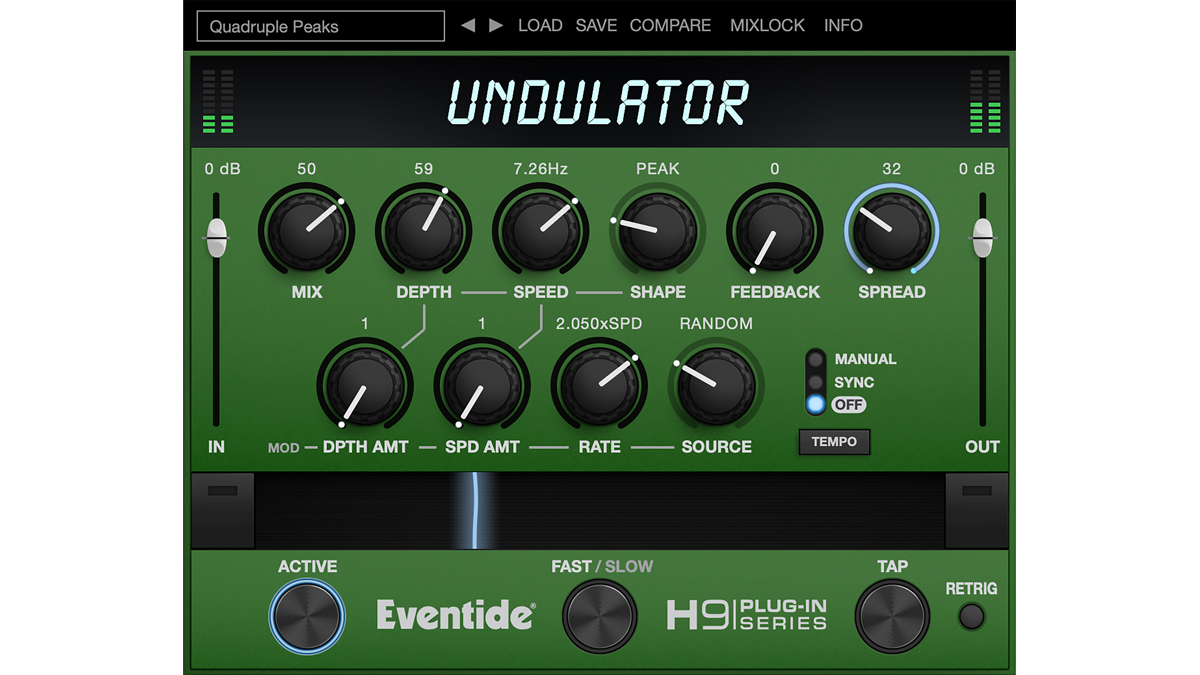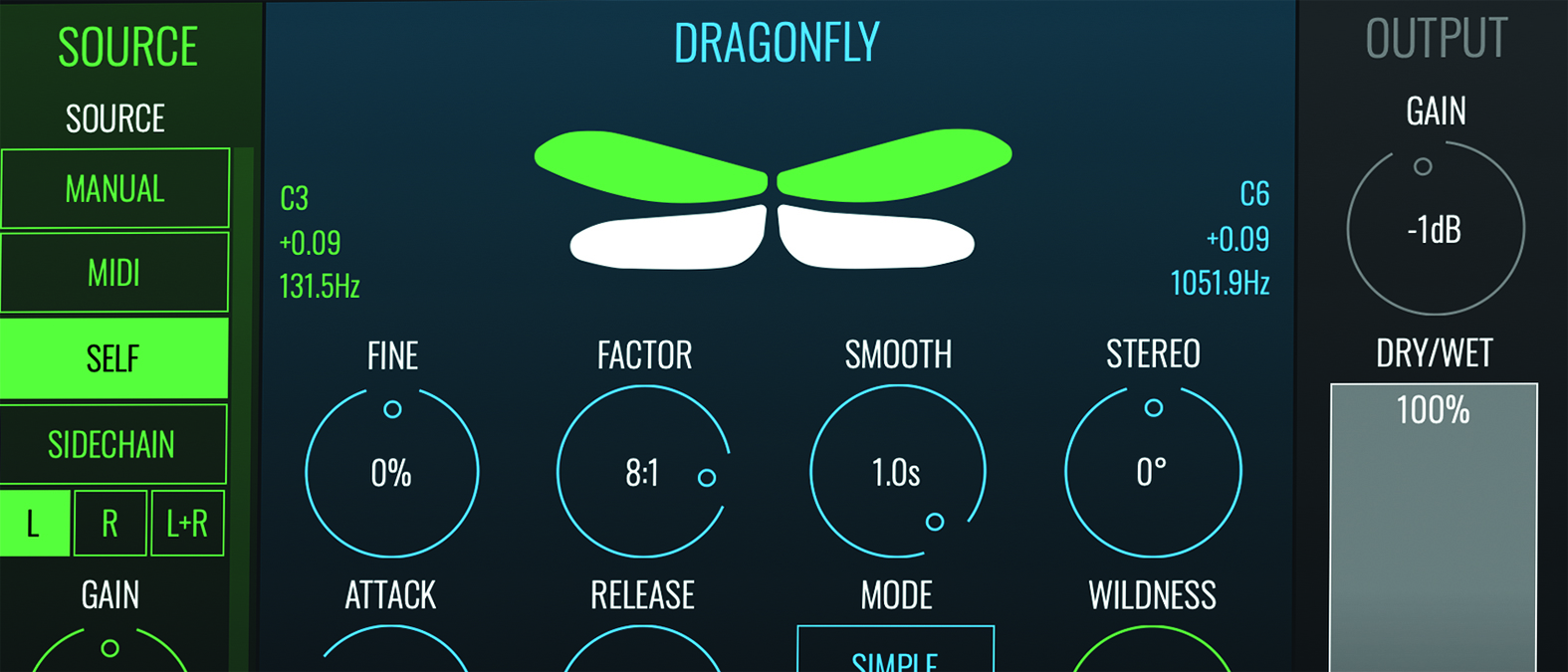MusicRadar Verdict
Dragonfly presents an artistic window on a much maligned effect, given a new lease of flexible life within this modern plugin.
Pros
- +
Vibey and effective tremolo.
- +
Sidechain as a trigger source unlocks a new dimension.
- +
Wild mode can mess up your sounds.
- +
Fun and flexible UI.
Cons
- -
Sudden gain leaps when applying Wild mode can be startling.
MusicRadar's got your back
BLEASS Dragonfly: What is it?
If you were to ask a roomful of producers what their favourite modulation effect is, it’s unlikely any would shout ‘tremolo’. Originating as a guitar effect back in the mists of time, today, tremolo’s simple LFO volume fluctuations don’t quite entice in the same way as say creative delay processing, high-pass filtering or blazing distortion.
That said, with increasingly off-the-wall production techniques more commonplace in modern pop (we’re looking at you Finneas), there’s been something of a resurgence of interest in how tremolo can be creatively applied in a fresh context.
That’s precisely what French company BLEASS has set out to achieve with Dragonfly. Established as recently as 2018, the company has already received praise for a growing storehouse of meaty-sounding effects plugins. This ear-pleasing arsenal is also fully usable on iOS too, which is neat for those of us that like to keep tweaking things on our morning commute.
BLEASS Dragonfly: Performance and verdict
Dragonfly is squarely focused on tremolo. Opening it up as an AU within Logic we’re presented with an enticing graphical UI that spotlights an animated dragonfly. This dragonfly flaps its wings in oscillation with whichever sound source you’ve selected to be the trigger of your tremolo. Its upper wings represent the left channel, while the lower pair move in conjunction with the right channel.

• Eventide Undulator
A software spin on Eventide’s classic H3000 can wobble those sounds with the best of them.
• Soundtoys Tremolator
Imparts an analogue authenticity, recalling the classic sounds of Fender and Wurlitzer.
This multi-sourced starting point for the effect is Dragonfly’s central USP. While you can choose between Manual, wherein the tremolo’s rate is defined by the Rate knob and you can adjust its amplitude by hand, more interesting results can be found by assigning the tremolo rate to MIDI.
Doing this applies the rate to the lowest MIDI note coming into the plugin, while the velocity value triggers the amplitude. Self sets the tremolo off based on the intensity of the input signal’s pitch, with corresponding amplitude.
The final trigger source is Sidechain — where you can set the modulation based on the activity and frequency of another track or instrument — and a bass synth is a nice example.
The resulting tremolo washes on your effected track can add not only impact but pleasingly resonate in sync with the sonic characteristics of whichever track you’ve got running parallel to your main track. It’s an inviting idea to keep switching the instrument in our sidechained track to see how Dragonfly responds.
Don’t have a flap
Beyond these multiple ways of igniting the tremolo, Dragonfly presents a heap of control parameters, including Fine, Factor, Smooth, Attack/Release and Wild. Wild imparts some oddball waveshaping filtering to the sound, and upping the ‘Wildness’ factor takes the audio in even weirder directions (sometimes too wild, too quickly).
These parameters give us greater ways to wrangle the perfect effect level for your track, particularly if you’re aiming to process a lead vocal in slight, subtle ways à la Billie Eilish.
To get a handle on Dragonfly’s creative scope, the presets present a smorgasbord of made earlier, ready-to-go tremolo sounds. From the vocally-tailored (Detuned Voice, Willie Irish) to the bass-enlivening (Bass Fattener, Insert UR Bass) to the just plain oddball (Hula Hoop), these are all excellent ways to get on the right kind of track, before you further tweak. You can also make and save your own presets too.
Phone it in
Dragonfly is also available on iOS as an AUv3 for the ridiculously great price of £4.50. To use it properly on mobile/iPad, you’ll want to use it in tandem with a supporting music workstation app, such as GarageBand or Steinberg’s Cubasis. Performance is fluid on our five-year-old iPad, using GarageBand.
Experimenting with Dragonfly in this context was a keen reminder of just how much fun mobile music production can be, and had us eyeing up the other offerings in Bleass’s iOS effects repertoire, including Alpha Synth and Delay. Be warned, this might be the first step down the slippery slope of Bleass-addiction…
Dragonfly is a heck of a load of fun to use, with its inventive UI and wide-ranging control set granting boundless control over the resulting tremolo. After an hour with the plugin, our roomful of music producers might just want to re-list those favourite effects
MusicRadar verdict: Dragonfly presents an artistic window on a much maligned effect, given a new lease of flexible life within this modern plugin.
BLEASS Dragonfly: The web says
"It’s great for adding character and interest to synths and other bedding parts, it can create fascinating pulses and rhythms if driven from a rhythmic part, and gives you loads of options for forging exciting and original-sounding vocal effects."
MusicTech
BLEASS Dragonfly: Hands-on demos
BLEASS
Gavinski's Tutorials
The Sound Test Room
Nu-Trix The Synth Guy
BLEASS Dragonfly: Specifications
- PC: Windows 8 and later, VST3 (64-bit).
- Mac: macOS 10.9 and later (64-bit only) (including macOS 11 Big Sur and M1 processors), VST3 (64-bit), Audio Unit.
- Format: BLEASS Dragonfly is not a standalone product, it requires a host software.
- Compatible with all VST3 / Audio Unit compatible DAWs.
- CONTACT: BLEASS
Computer Music magazine is the world’s best selling publication dedicated solely to making great music with your Mac or PC computer. Each issue it brings its lucky readers the best in cutting-edge tutorials, need-to-know, expert software reviews and even all the tools you actually need to make great music today, courtesy of our legendary CM Plugin Suite.











